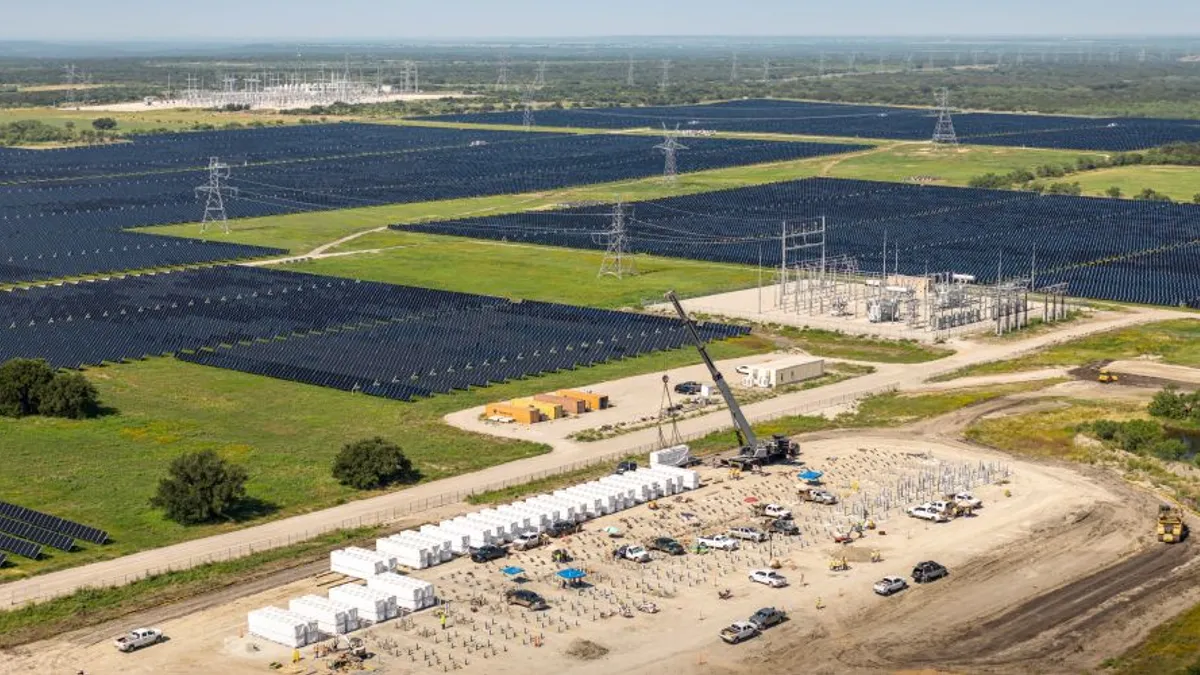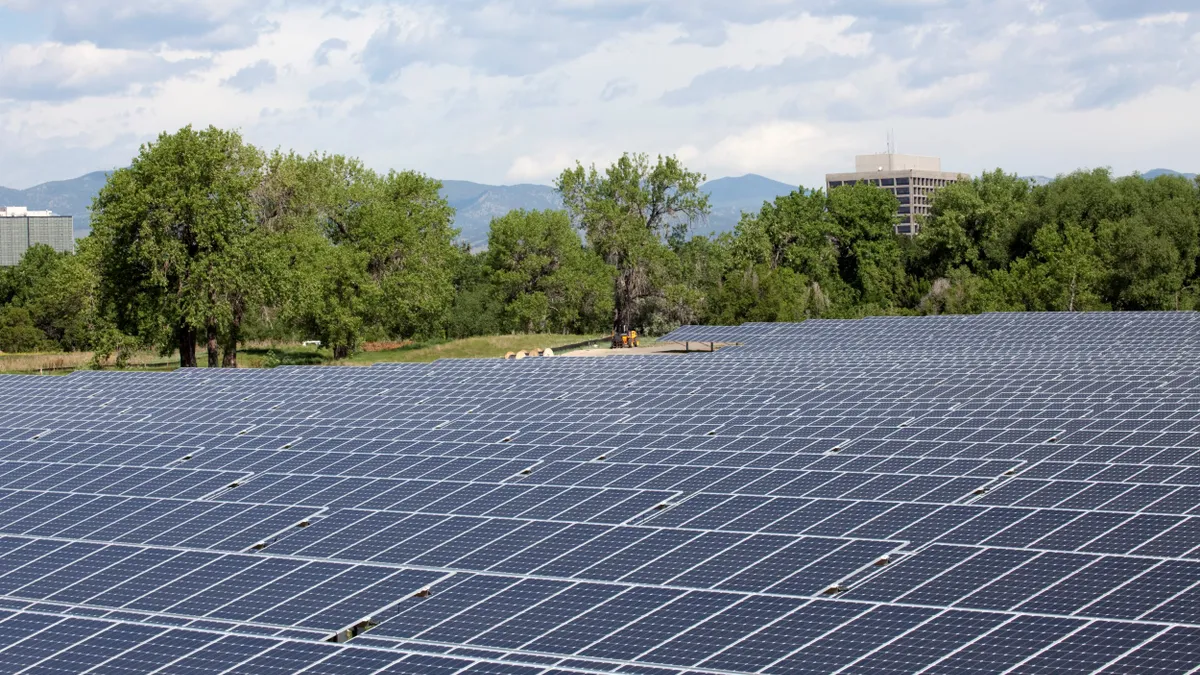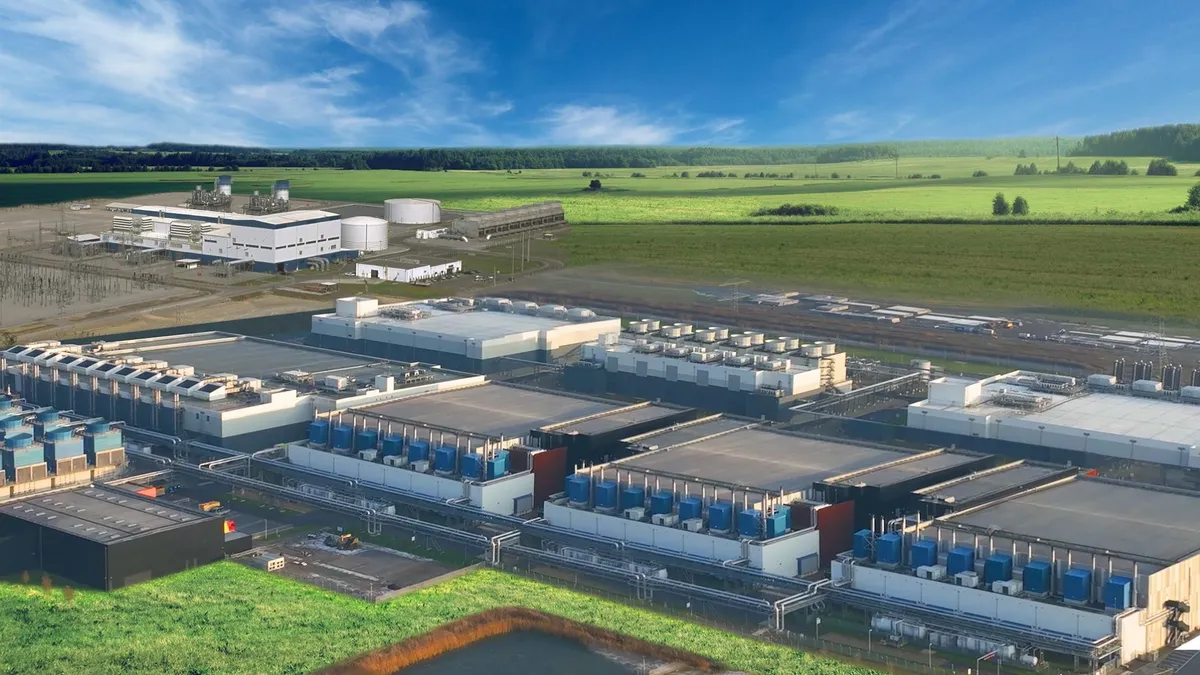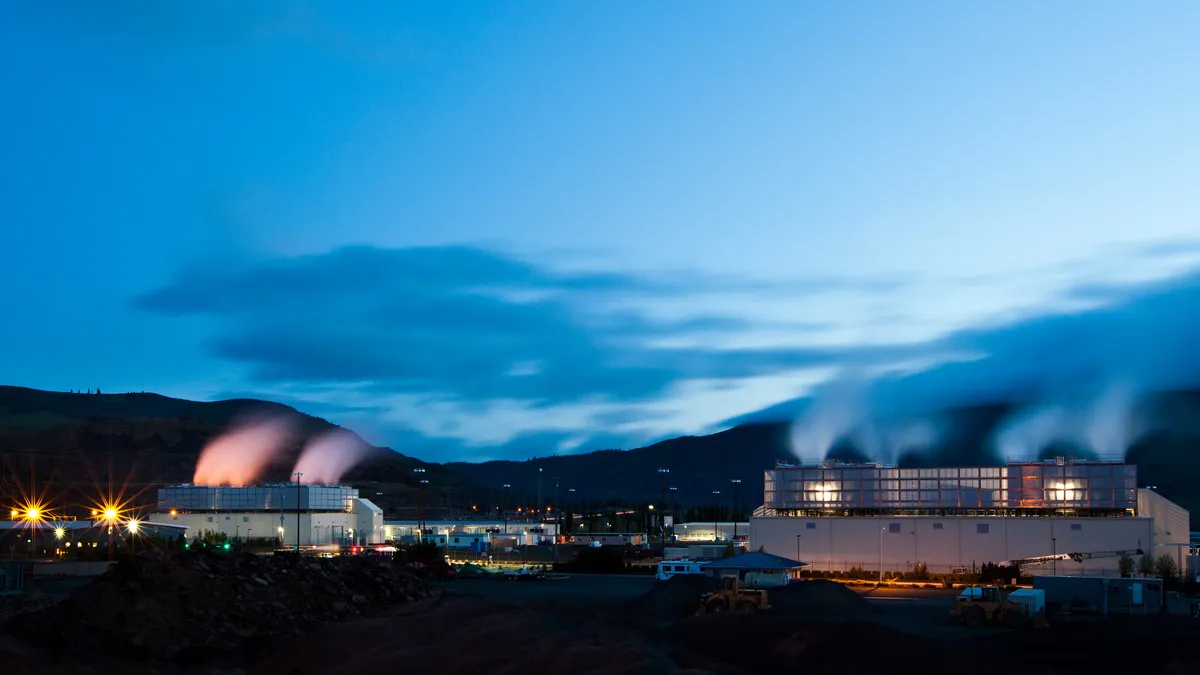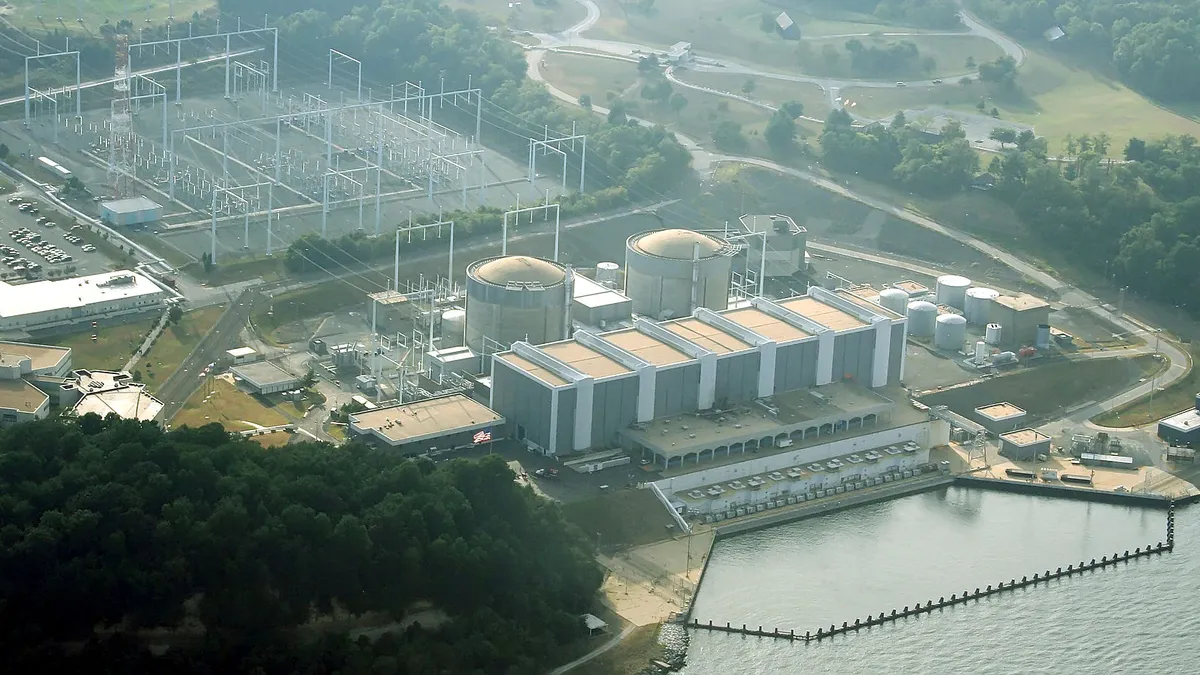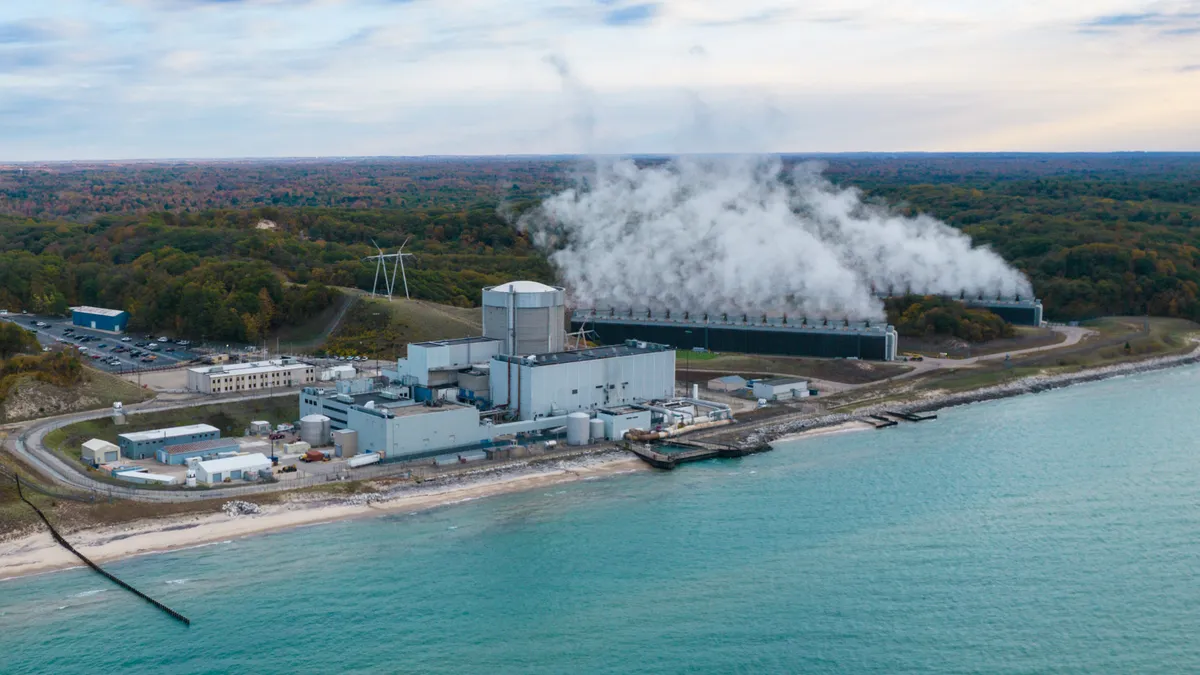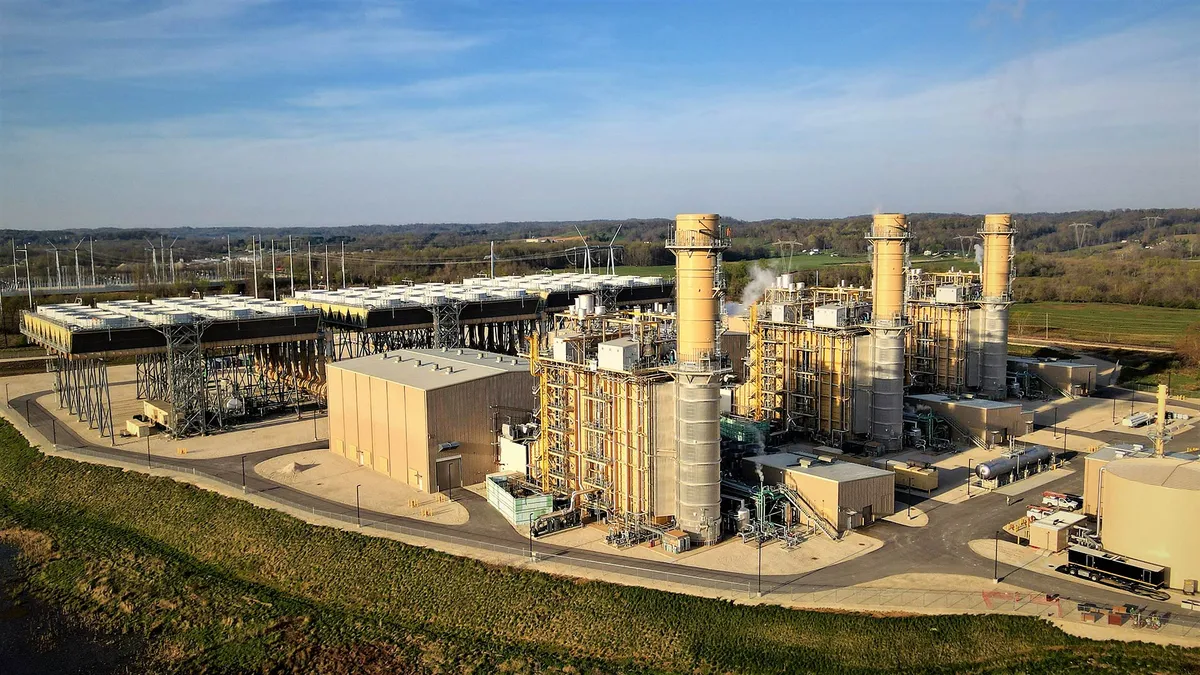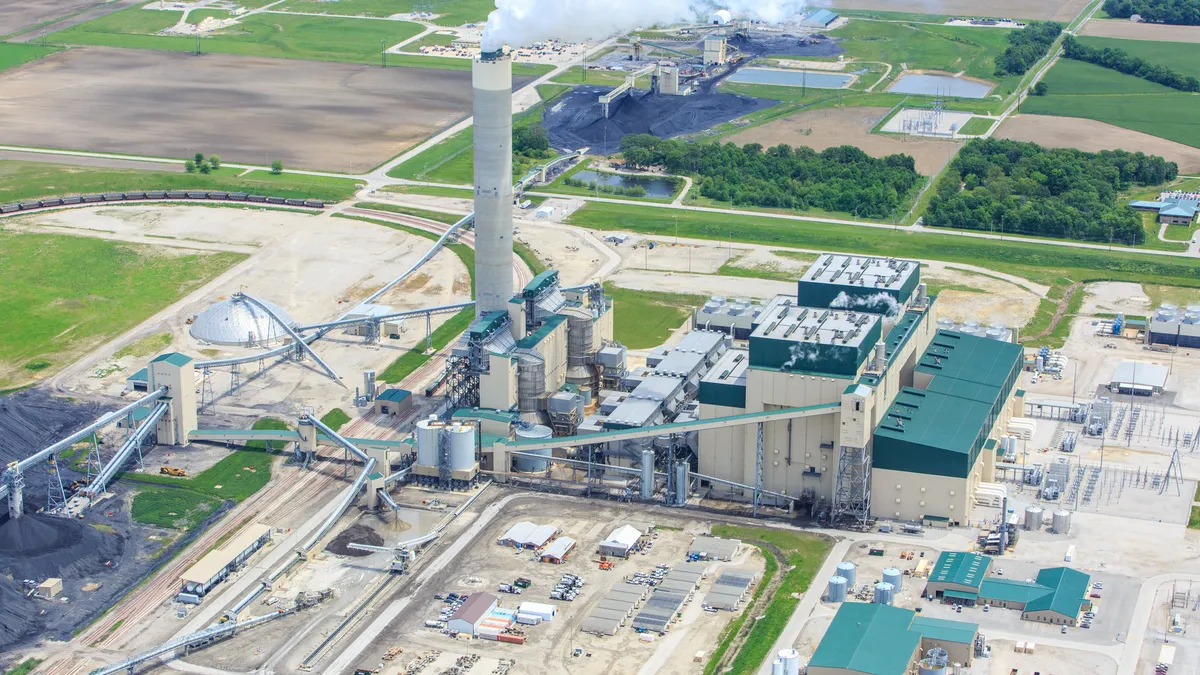Google will buy power for planned data centers to be co-located in energy parks with $20 billion in renewable energy and energy storage to be built by Intersect Power, the companies said Tuesday.
“When Intersect Power builds new clean energy assets in regions and projects of interest, Google will be able to provide power offtake as an anchor tenant in the co-located industrial park that would support data center development,” the technology company said in a filing with the Federal Energy Regulstory Commission.
The first phase of the first co-located clean energy project is expected to be operational by 2026 and fully complete in 2027, Google said, adding that it expects to disclose the project’s site soon.
Google and TPG Rise Climate, part of private equity firm TPG, led an $800 million funding round, with participation from Climate Adaptive Infrastructure and Greenbelt Capital Partners, to help spur the effort, Intersect Power said.
Intersect Power owns 2.2 GW of operating solar and 2.4 GWh of battery storage in operation or construction, according to the Houston-based renewable energy developer. It expects it will break ground on 4 GW of solar and 10 GWh of battery storage next year. It is also developing an energy park in the Texas Panhandle.
Energy parks can offer broad benefits
In 2013, Intersect Power proposed its Meitner project, which would use 460 MW of on-site wind and 340 MW of on-site solar to power 400 MW of hydrogen electrolyzers, Energy Innovation Policy & Technology said in a report on energy parks released Monday. Energy parks are effectively large microgrids, Energy Innovation said.
Energy parks — such as those envisioned under the Google initiative with Intersect Power — can serve large loads like data centers and also provide grid services, but they face regulatory challenges, including uncertainty surrounding the tariffs for co-located load, according to the report.
FERC and grid operators should develop standardized frameworks that allow energy parks to integrate into wholesale markets with “certainty and without undue complexity,” Energy Innovation said.
Energy parks serving large loads can bring a range of benefits, including equipment savings, the leveraging of tax credits with local economic development benefits, and the ability to expand projects over time, according to Energy Innovation. They can also give data centers access to power supplies more quickly than by buying power from new grid-connected resources, the energy- and climate-focused think tank said.
Google seeks fast-track for clean power co-location
Co-location can enable the timely integration of new load and generation, but it is not a substitute for the broader infrastructure investment needed to support expected load growth, Google said in its FERC filing, which was in response to a recent agency-led technical conference on co-located loads.
“We are in a period of historic energy demand expansion, and the associated costs are unavoidable,” Google said while urging FERC to issue guidance on co-located load. “Co-location must not become a mechanism to defer or avoid those costs but should instead be a pathway to help ensure the grid remains reliable, resilient, and prepared for the future.”
FERC should require grid operators to show that any planned co-location arrangement would not hurt grid reliability, according to Google.
“This is primarily an issue when co-locating new large loads next to existing generation resources, where existing grid-connected resources are diverted away from serving network load,” Google said.
Also, co-location should not shift identifiable transmission and distribution infrastructure investment costs to other customers, the tech giant said.
Google called for fast-tracking interconnection reviews for co-located loads that are tied to new carbon-free resources that help utility and grid operator planning processes and improve reliability.
Those interconnection reviews could be conducted through fast-tracked study processes, either inside or outside of an existing interconnection cluster, or by bundling the reviews of planned co-located load and generation to consolidate network upgrades and reduce study timelines, according to Google.
Google also urged FERC to help improve load forecasting, a key factor in determining what generation and transmission should be built. There is a lack of transparency at regional transmission organizations about the viability of new load requests and utilities and transmission owners are inconsistent in verifying that projected load additions are likely to materialize, Google said.
“Requiring load adjustments due to new large load interconnections to be ‘commitment-backed’ through material, up-front financial commitments is a proactive approach to load forecasting that standardizes the processes for verifying large load additions before inclusion in RTO load forecasts, thereby protecting ratepayers from overbuilding the system on the basis of duplicative or speculative load requests,” Google said.
The lack of standard rules, practices and procedures for integrating co-located with new and existing generation means co-location configurations must go through “a laborious, unpredictable [and] semi-discretionary process to interconnect,” Intersect Power told FERC on Monday.



